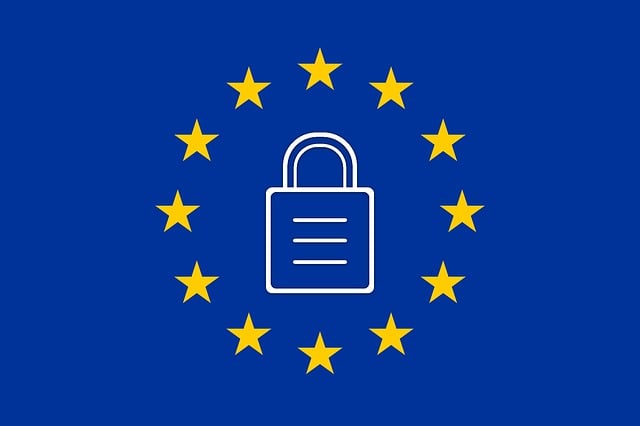In the transportation industry, adhering to Select DOT Compliance governed by regulatory bodies like the DOT is crucial for safety and legal compliance. Businesses must understand and implement comprehensive guidelines on record-keeping, accident investigation, emergency preparedness, and vehicle maintenance, fostered through strategic planning, training, regular audits, and proactive policy updates. Software solutions streamline these processes, enhancing efficiency and customer trust. Staying vigilant and committed to these practices is essential for maintaining high standards in a highly regulated sector.
In today’s competitive landscape, mastering industry standards is non-negotiable. This comprehensive guide delves into the essence of master industry standards, offering a detailed overview for businesses aiming for excellence. We explore the critical role of Select DOT Compliance in upholding safety and quality, dissect key implementation components, and provide best practices for sustained standard maintenance and updates. By the end, readers will grasp the strategic importance of these standards in their operations.
- Understanding Master Industry Standards: A Comprehensive Overview
- The Role of DOT Compliance in Ensuring Safety and Quality
- Key Components of Effective Master Industry Standard Implementation
- Best Practices for Maintaining and Updating Industry Standards
Understanding Master Industry Standards: A Comprehensive Overview

Mastering industry standards is a cornerstone for any business aiming to excel and ensure safety across all operations. These standards, often governed by regulatory bodies like the DOT (Department of Transportation), dictate best practices in various sectors. For transportation-related industries, adhering to DOT compliance is not just a legal requirement but also ensures efficiency and enhances customer trust.
Understanding these master industry standards involves comprehending comprehensive guidelines on everything from dot record keeping standards—which involve meticulous documentation for regulatory oversight—to dot accident investigation procedures, designed to uncover root causes and prevent future incidents. By leveraging fleet management software solutions, businesses can streamline these processes, making them more effective and less resource-intensive.
The Role of DOT Compliance in Ensuring Safety and Quality

In today’s world, where safety is paramount, especially within the transportation industry, adhering to Department of Transportation (DOT) compliance standards is non-negotiable. These stringent regulations are designed to ensure not just the safety of drivers and passengers but also the quality and integrity of goods being transported. By implementing DOT compliance, carriers can navigate the complex web of rules and guidelines, promoting a culture of safety that extends far beyond legal requirements.
The DOT’s reach encompasses various critical areas, including emergency preparedness protocols, fatigue management regulations, and consistent vehicle maintenance standards. Compliance not only mitigates risks but also fosters a sense of accountability among carriers. Through regular audits and adherence to these norms, companies can maintain their operational integrity, enhance customer trust, and contribute to a safer overall transportation ecosystem. Select DOT compliance is key to thriving in this highly regulated sector while prioritizing safety at every turn.
Key Components of Effective Master Industry Standard Implementation

Implementing master industry standards is a multifaceted process that requires meticulous planning and execution. The key components include establishing clear goals aligned with industry best practices, such as those outlined by the Department of Transportation (DOT) for compliance. This involves meticulously studying and integrating safety regulations for the trucking industry, including DOT record-keeping standards, which are vital to maintaining transparency and accountability.
Effective implementation demands comprehensive training programs for truck drivers on updated safety protocols. Ensuring they grasp these standards is crucial for fostering a culture of safety within the organization. Regular audits and continuous improvement cycles further solidify adherence to industry standards, creating a robust framework that promotes safety in every aspect of trucking operations.
Best Practices for Maintaining and Updating Industry Standards

Maintaining industry standards is an ongoing process that requires dedication and a proactive approach. One of the best practices for keeping up with evolving regulations is regular review and updates. Organizations should allocate dedicated resources to monitor changes in DOT compliance, shipping and logistics compliance, and freight transport industry best practices. This ensures that their operations remain aligned with the latest legal requirements. By implementing a structured system for tracking amendments, companies can stay proactive rather than reactive.
Additionally, engaging in truck stop safety initiatives plays a vital role in upholding industry standards. These initiatives not only enhance road safety but also contribute to the overall efficiency of logistics operations. Regular inspections, employee training on safety protocols, and adopting innovative technologies are some ways to foster a culture of compliance within the freight transport sector. Staying vigilant and committed to these practices will help maintain a high standard of quality in an ever-changing industry landscape.
Mastering industry standards, as highlighted in this article, is paramount for any business aiming for excellence. By understanding comprehensive overviews, implementing effective strategies, and adhering to key components like robust DOT compliance, organizations can ensure safety, quality, and sustained success. Regular updates and best practices are essential to navigating the dynamic landscape of industry standards, ensuring a competitive edge and fostering a culture of continuous improvement.
